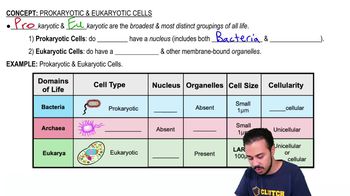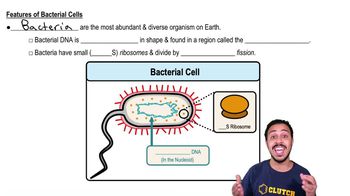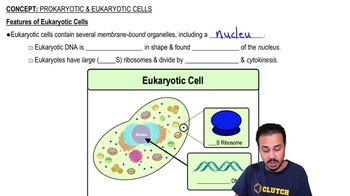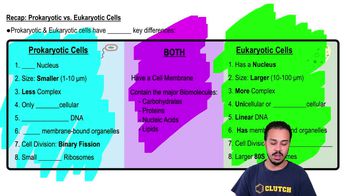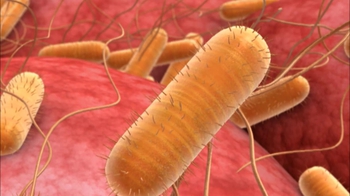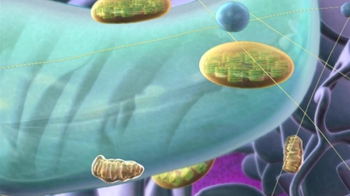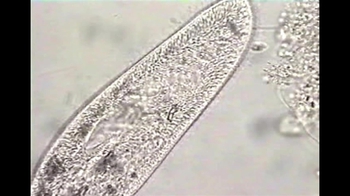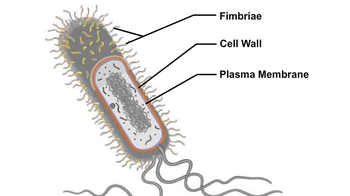Table of contents
- 1. Introduction to Biology2h 42m
- 2. Chemistry3h 40m
- 3. Water1h 26m
- 4. Biomolecules2h 23m
- 5. Cell Components2h 26m
- 6. The Membrane2h 31m
- 7. Energy and Metabolism2h 0m
- 8. Respiration2h 40m
- 9. Photosynthesis2h 49m
- 10. Cell Signaling59m
- 11. Cell Division2h 47m
- 12. Meiosis2h 0m
- 13. Mendelian Genetics4h 44m
- Introduction to Mendel's Experiments7m
- Genotype vs. Phenotype17m
- Punnett Squares13m
- Mendel's Experiments26m
- Mendel's Laws18m
- Monohybrid Crosses19m
- Test Crosses14m
- Dihybrid Crosses20m
- Punnett Square Probability26m
- Incomplete Dominance vs. Codominance20m
- Epistasis7m
- Non-Mendelian Genetics12m
- Pedigrees6m
- Autosomal Inheritance21m
- Sex-Linked Inheritance43m
- X-Inactivation9m
- 14. DNA Synthesis2h 27m
- 15. Gene Expression3h 20m
- 16. Regulation of Expression3h 31m
- Introduction to Regulation of Gene Expression13m
- Prokaryotic Gene Regulation via Operons27m
- The Lac Operon21m
- Glucose's Impact on Lac Operon25m
- The Trp Operon20m
- Review of the Lac Operon & Trp Operon11m
- Introduction to Eukaryotic Gene Regulation9m
- Eukaryotic Chromatin Modifications16m
- Eukaryotic Transcriptional Control22m
- Eukaryotic Post-Transcriptional Regulation28m
- Eukaryotic Post-Translational Regulation13m
- 17. Viruses37m
- 18. Biotechnology2h 58m
- 19. Genomics17m
- 20. Development1h 5m
- 21. Evolution3h 1m
- 22. Evolution of Populations3h 52m
- 23. Speciation1h 37m
- 24. History of Life on Earth2h 6m
- 25. Phylogeny2h 31m
- 26. Prokaryotes4h 59m
- 27. Protists1h 12m
- 28. Plants1h 22m
- 29. Fungi36m
- 30. Overview of Animals34m
- 31. Invertebrates1h 2m
- 32. Vertebrates50m
- 33. Plant Anatomy1h 3m
- 34. Vascular Plant Transport1h 2m
- 35. Soil37m
- 36. Plant Reproduction47m
- 37. Plant Sensation and Response1h 9m
- 38. Animal Form and Function1h 19m
- 39. Digestive System1h 10m
- 40. Circulatory System1h 57m
- 41. Immune System1h 12m
- 42. Osmoregulation and Excretion50m
- 43. Endocrine System1h 4m
- 44. Animal Reproduction1h 2m
- 45. Nervous System1h 55m
- 46. Sensory Systems46m
- 47. Muscle Systems23m
- 48. Ecology3h 11m
- Introduction to Ecology20m
- Biogeography14m
- Earth's Climate Patterns50m
- Introduction to Terrestrial Biomes10m
- Terrestrial Biomes: Near Equator13m
- Terrestrial Biomes: Temperate Regions10m
- Terrestrial Biomes: Northern Regions15m
- Introduction to Aquatic Biomes27m
- Freshwater Aquatic Biomes14m
- Marine Aquatic Biomes13m
- 49. Animal Behavior28m
- 50. Population Ecology3h 41m
- Introduction to Population Ecology28m
- Population Sampling Methods23m
- Life History12m
- Population Demography17m
- Factors Limiting Population Growth14m
- Introduction to Population Growth Models22m
- Linear Population Growth6m
- Exponential Population Growth29m
- Logistic Population Growth32m
- r/K Selection10m
- The Human Population22m
- 51. Community Ecology2h 46m
- Introduction to Community Ecology2m
- Introduction to Community Interactions9m
- Community Interactions: Competition (-/-)38m
- Community Interactions: Exploitation (+/-)23m
- Community Interactions: Mutualism (+/+) & Commensalism (+/0)9m
- Community Structure35m
- Community Dynamics26m
- Geographic Impact on Communities21m
- 52. Ecosystems2h 36m
- 53. Conservation Biology24m
5. Cell Components
Prokaryotic & Eukaryotic Cells
Problem 15`
Textbook Question
Imagine a spherical cell with a radius of 10 μm. What is the cell's surface area in μm2? Its volume, in μm3? (Note: For a sphere of radius r, surface area = 4πr2 and volume = 4/3πr3. Remember that the value of π is 3.14.) What is the ratio of surface area to volume for this cell? Now do the same calculations for a second cell, this one with a radius of 20 μm. Compare the surface-to-volume ratios of the two cells. How is this comparison significant to the functioning of cells?
 Verified step by step guidance
Verified step by step guidance1
Step 1: Start by calculating the surface area of the first cell (radius = 10 μm). Use the formula for the surface area of a sphere: <math xmlns='http://www.w3.org/1998/Math/MathML'> <mi>A</mi> <mo>=</mo> <mn>4</mn> <mi>π</mi> <msup><mi>r</mi><mn>2</mn></msup> </math>. Substitute r = 10 μm into the formula.
Step 2: Next, calculate the volume of the first cell using the formula for the volume of a sphere: <math xmlns='http://www.w3.org/1998/Math/MathML'> <mi>V</mi> <mo>=</mo> <mfrac><mn>4</mn><mn>3</mn></mfrac> <mi>π</mi> <msup><mi>r</mi><mn>3</mn></msup> </math>. Substitute r = 10 μm into the formula.
Step 3: Determine the surface area-to-volume ratio for the first cell by dividing the surface area by the volume: <math xmlns='http://www.w3.org/1998/Math/MathML'> <mfrac><mi>A</mi><mi>V</mi></mfrac> </math>. Use the values calculated in Steps 1 and 2.
Step 4: Repeat Steps 1 through 3 for the second cell, which has a radius of 20 μm. Use the same formulas for surface area and volume, substituting r = 20 μm.
Step 5: Compare the surface area-to-volume ratios of the two cells. Discuss the significance of the comparison in terms of cell function, such as nutrient exchange and waste removal, emphasizing how smaller cells have a higher surface area-to-volume ratio, which is advantageous for efficient transport processes.
 Verified video answer for a similar problem:
Verified video answer for a similar problem:This video solution was recommended by our tutors as helpful for the problem above
Video duration:
2mPlay a video:
Was this helpful?
Key Concepts
Here are the essential concepts you must grasp in order to answer the question correctly.
Surface Area and Volume Formulas
The surface area and volume of a sphere are calculated using specific mathematical formulas: surface area = 4πr² and volume = 4/3πr³. These formulas are essential for determining the physical characteristics of spherical cells, which are common in biological systems. Understanding these calculations allows for insights into how cells interact with their environment.
Recommended video:
Guided course

Surface Area to Volume Ratio
Surface Area-to-Volume Ratio
The surface area-to-volume ratio (SA:V) is a critical concept in biology that describes how the surface area of a cell relates to its volume. A higher SA:V ratio indicates that a cell has more surface area relative to its volume, which facilitates efficient nutrient uptake and waste removal. This ratio is crucial for understanding cellular efficiency and limits on cell size.
Recommended video:
Guided course

Surface Area to Volume Ratio
Biological Implications of Cell Size
Cell size has significant biological implications, particularly regarding metabolic rates and the efficiency of transport processes. Smaller cells tend to have higher SA:V ratios, allowing for more effective exchange of materials with their environment. This concept is vital for understanding how cell size influences growth, function, and overall organismal physiology.
Recommended video:
Guided course

Biological Membranes

 5:54m
5:54mWatch next
Master Prokaryotic & Eukaryotic Cells with a bite sized video explanation from Jason
Start learningRelated Videos
Related Practice

